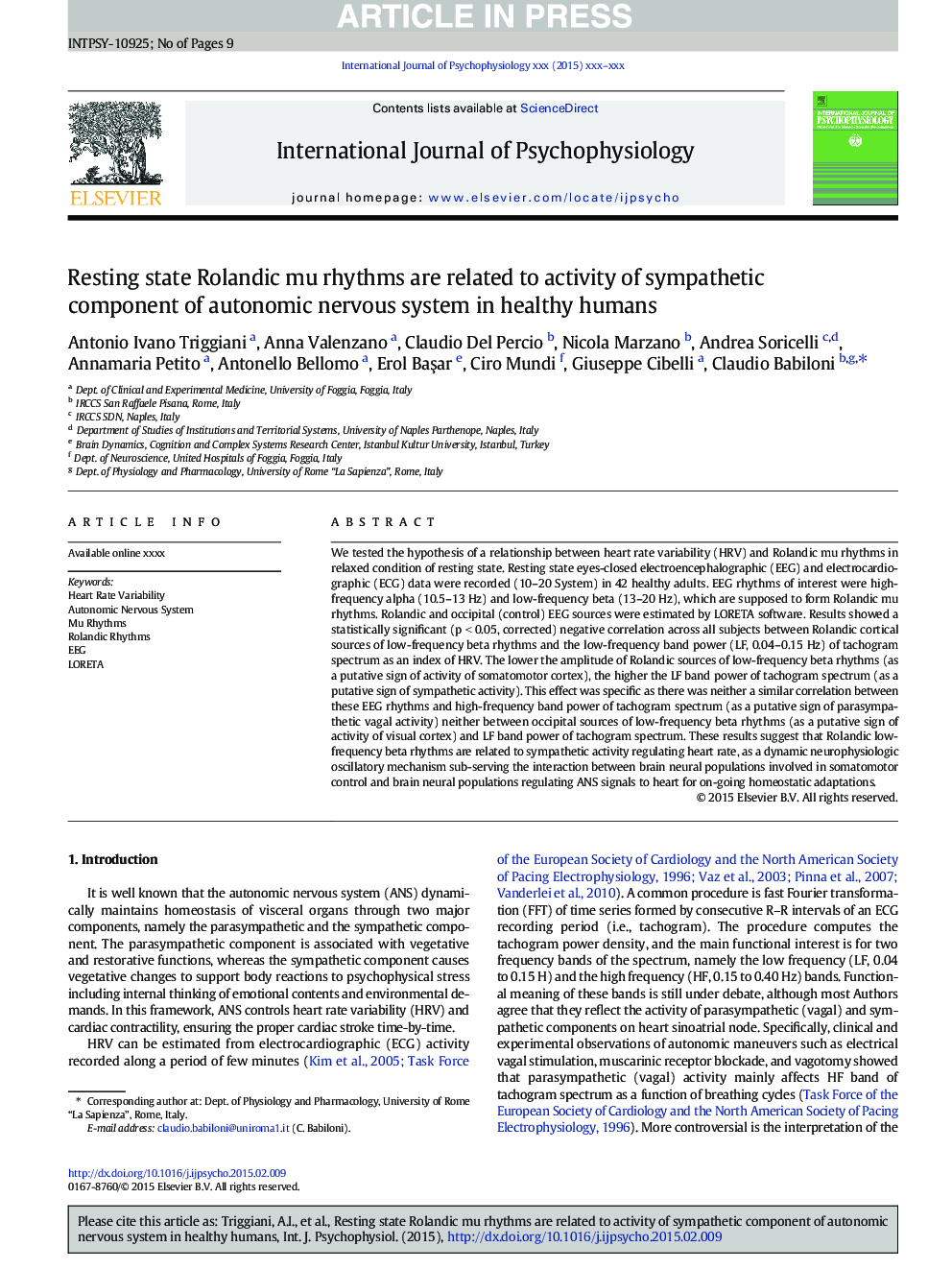| Article ID | Journal | Published Year | Pages | File Type |
|---|---|---|---|---|
| 7295046 | International Journal of Psychophysiology | 2016 | 9 Pages |
Abstract
We tested the hypothesis of a relationship between heart rate variability (HRV) and Rolandic mu rhythms in relaxed condition of resting state. Resting state eyes-closed electroencephalographic (EEG) and electrocardiographic (ECG) data were recorded (10-20 System) in 42 healthy adults. EEG rhythms of interest were high-frequency alpha (10.5-13 Hz) and low-frequency beta (13-20 Hz), which are supposed to form Rolandic mu rhythms. Rolandic and occipital (control) EEG sources were estimated by LORETA software. Results showed a statistically significant (p < 0.05, corrected) negative correlation across all subjects between Rolandic cortical sources of low-frequency beta rhythms and the low-frequency band power (LF, 0.04-0.15 Hz) of tachogram spectrum as an index of HRV. The lower the amplitude of Rolandic sources of low-frequency beta rhythms (as a putative sign of activity of somatomotor cortex), the higher the LF band power of tachogram spectrum (as a putative sign of sympathetic activity). This effect was specific as there was neither a similar correlation between these EEG rhythms and high-frequency band power of tachogram spectrum (as a putative sign of parasympathetic vagal activity) neither between occipital sources of low-frequency beta rhythms (as a putative sign of activity of visual cortex) and LF band power of tachogram spectrum. These results suggest that Rolandic low-frequency beta rhythms are related to sympathetic activity regulating heart rate, as a dynamic neurophysiologic oscillatory mechanism sub-serving the interaction between brain neural populations involved in somatomotor control and brain neural populations regulating ANS signals to heart for on-going homeostatic adaptations.
Related Topics
Life Sciences
Neuroscience
Behavioral Neuroscience
Authors
Antonio Ivano Triggiani, Anna Valenzano, Claudio Del Percio, Nicola Marzano, Andrea Soricelli, Annamaria Petito, Antonello Bellomo, Erol BaÅar, Ciro Mundi, Giuseppe Cibelli, Claudio Babiloni,
